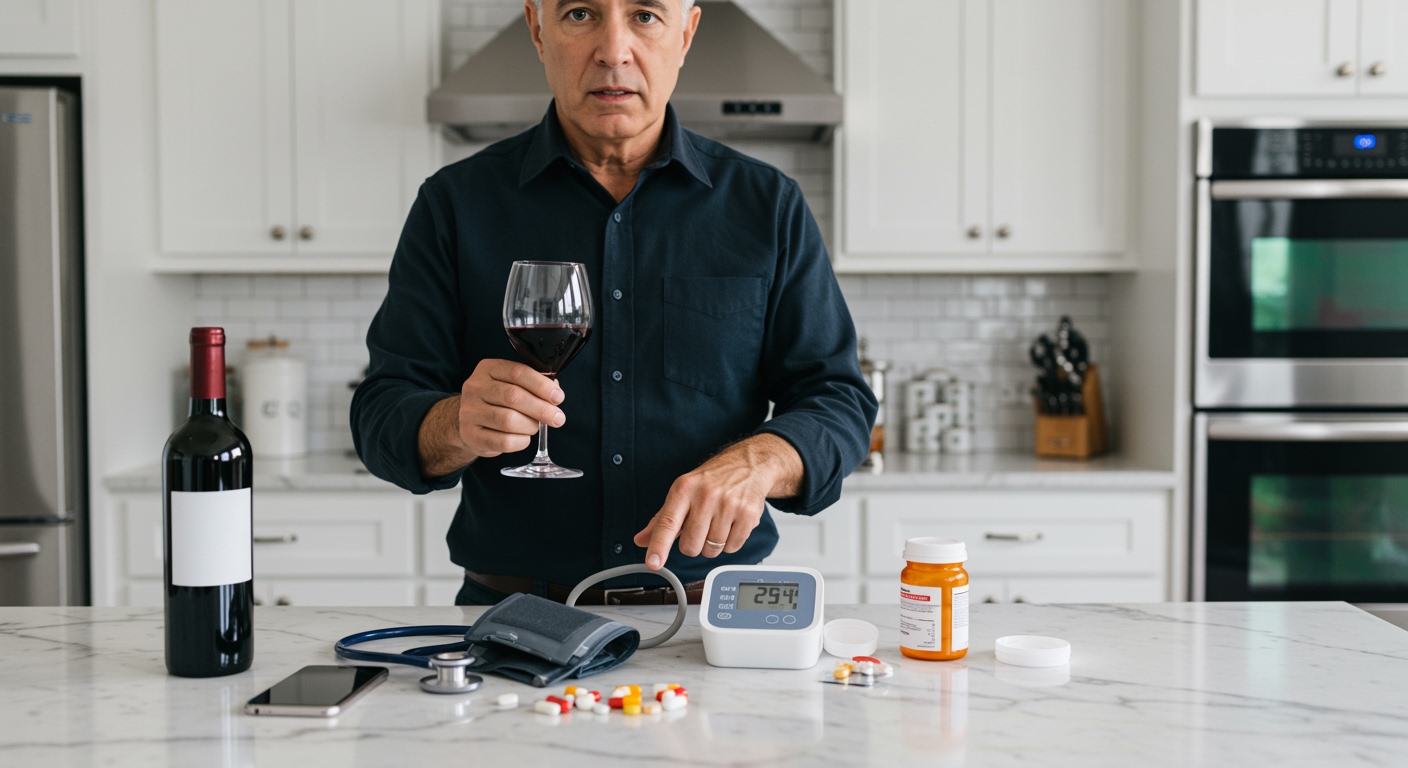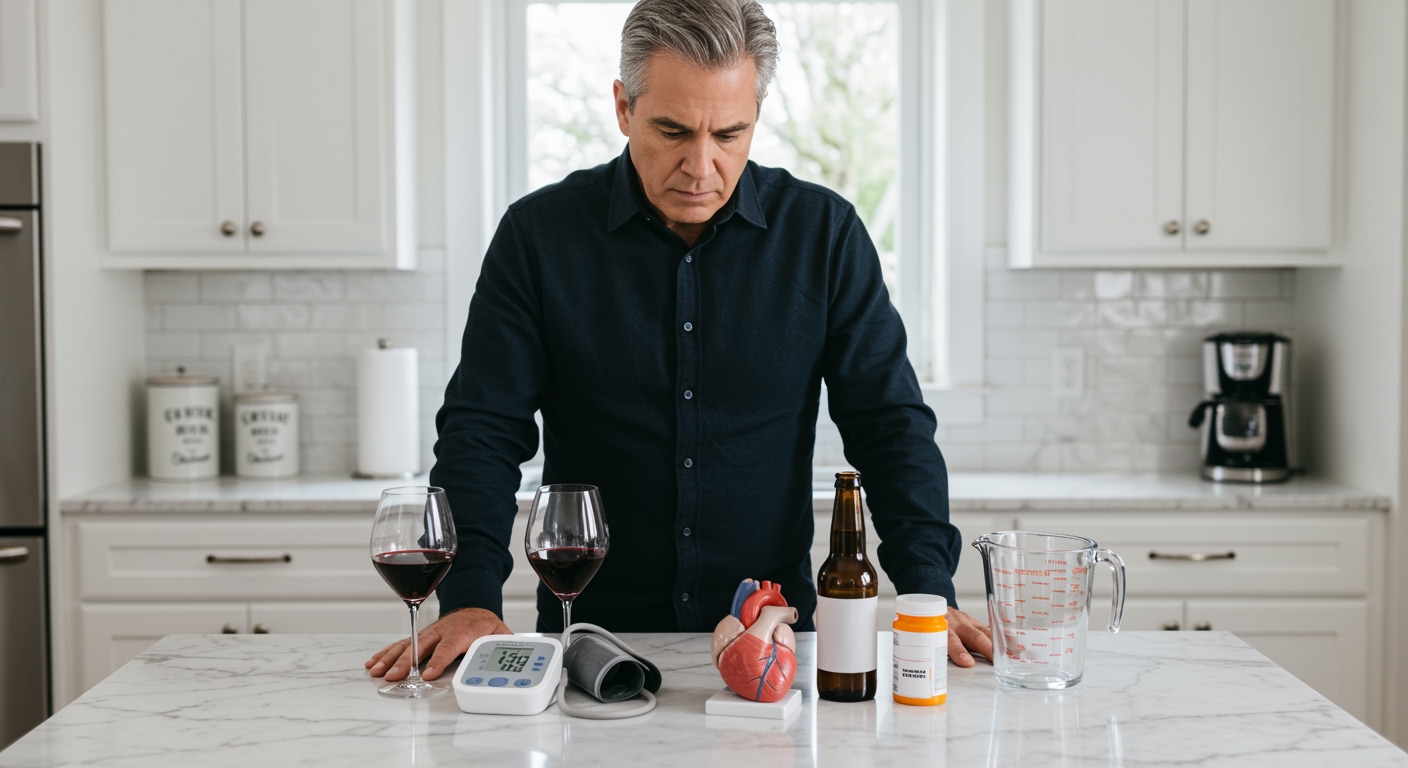✪ Key Takeaway: Sugar raises blood pressure through multiple pathways including insulin resistance, inflammation, and sodium retention.
Introduction
Your doctor tells you to cut salt for high blood pressure, but nobody mentions the white crystals hiding in your morning coffee.
You might be asking this question because recent research shows sugar affects blood pressure in ways that surprise even medical professionals.
Hi, I’m Abdur, your nutrition coach and today I’m going to explain how sugar impacts your blood pressure and why it might be more dangerous than salt.
How Does Sugar Actually Raise Blood Pressure?
Sugar increases blood pressure through multiple biological pathways that work simultaneously in your body.
When you consume sugar, your pancreas releases insulin to manage blood glucose levels.
High insulin levels trigger your kidneys to retain sodium, which increases blood volume and pressure.
Sugar also activates your sympathetic nervous system, the part that controls your fight-or-flight response.
This activation increases your heart rate and causes blood vessels to constrict, raising pressure throughout your circulatory system.
Research shows that people who consume 25% of their calories from added sugars have nearly triple the risk of cardiovascular disease compared to those consuming less than 10%.
✪ Fact: Your blood pressure can rise within 30 minutes of consuming a high-sugar meal or drink.
Is Sugar Really Worse Than Salt For Blood Pressure?
The evidence suggests sugar might be more problematic than salt for many people with high blood pressure.
Salt primarily affects blood pressure by increasing blood volume through water retention.
Sugar, however, attacks your cardiovascular system through multiple mechanisms including inflammation, insulin resistance, and direct vascular damage.
Studies show that reducing sugar intake can lower systolic blood pressure by 8-10 mmHg within just two weeks.
Salt reduction typically produces smaller decreases of 2-5 mmHg in most people.
The American Heart Association now recognizes that added sugars contribute significantly to hypertension development.
Your body can better regulate small amounts of natural salt than it can handle the massive sugar loads in processed foods.
✪ Pro Tip: Focus on cutting added sugars before worrying about moderate salt intake from whole foods.
What Types Of Sugar Are Most Dangerous?
Fructose appears to be the most problematic sugar for blood pressure regulation.
Unlike glucose, fructose bypasses normal metabolic controls and goes directly to your liver for processing.
This rapid processing creates metabolic stress that triggers inflammation and insulin resistance.
High fructose corn syrup, found in most sodas and processed foods, contains concentrated fructose that hits your system like a metabolic bomb.
Regular table sugar (sucrose) contains 50% fructose, making it moderately problematic in large amounts.
Natural fruit sugars come with fiber and nutrients that slow absorption and reduce blood pressure impact.
Studies show that people drinking just one sugary beverage daily have 18% higher risk of developing hypertension.
✪ Note: Liquid sugars raise blood pressure faster than solid sugars because they absorb more quickly.
How Much Sugar Is Safe For Blood Pressure?
The World Health Organization recommends limiting added sugars to less than 10% of total daily calories.
For optimal blood pressure control, aim for less than 5% of calories from added sugars.
This translates to about 25 grams or 6 teaspoons of added sugar per day for most adults.
One 12-ounce soda contains approximately 39 grams of sugar, exceeding safe limits in a single drink.
Natural sugars from whole fruits do not count toward these limits because they come with protective nutrients.
People with existing high blood pressure should be even more restrictive with sugar intake.
Research indicates that every 10-gram reduction in daily sugar intake can lower systolic blood pressure by 1-2 mmHg.
✪ Pro Tip: Track hidden sugars in sauces, dressings, and packaged foods that add up quickly throughout the day.
What Happens When You Cut Sugar For Blood Pressure?
Reducing sugar intake produces rapid improvements in blood pressure within days to weeks.
Your insulin sensitivity begins improving within 48-72 hours of cutting added sugars.
Better insulin function means your kidneys stop retaining excess sodium, naturally lowering blood volume.
Inflammation markers decrease significantly after two weeks of reduced sugar consumption.
Your blood vessels begin to relax and dilate properly as inflammatory stress decreases.
Many people see systolic pressure drop by 5-15 mmHg within the first month of sugar reduction.
Weight loss from cutting sugar provides additional blood pressure benefits through reduced cardiovascular workload.
✪ Fact: Some people can reduce or eliminate blood pressure medications after sustained sugar reduction under medical supervision.
The Bottom Line
Sugar raises blood pressure through multiple dangerous pathways that make it potentially more harmful than salt for cardiovascular health.
The real enemy of healthy blood pressure is not the salt shaker on your table, but the sugar hiding in your food.
I would love to hear about your experiences with reducing sugar and any questions you might have about managing blood pressure naturally in the comments below.
References
At NutritionCrown, we use quality and credible sources to ensure our content is accurate and trustworthy. Below are the sources referenced in creating this article:
- PMC: Sugar and Cardiovascular Disease
- Harvard Health: The Sweet Danger of Sugar
- JAMA Internal Medicine: Added Sugar Intake and Cardiovascular Disease
- Blood Pressure UK: Sugar and Your Blood Pressure





